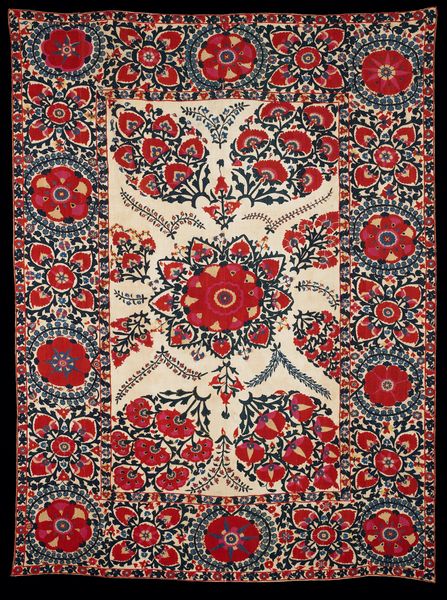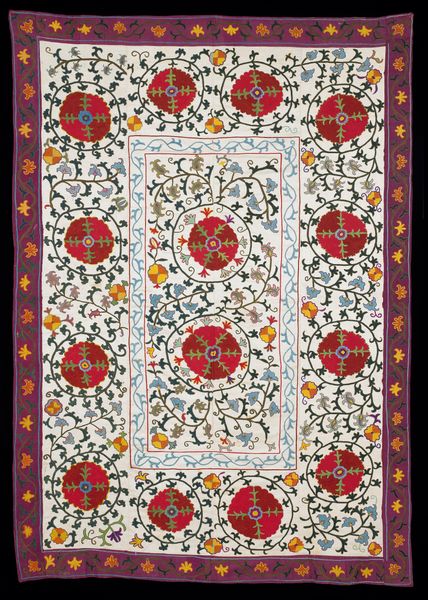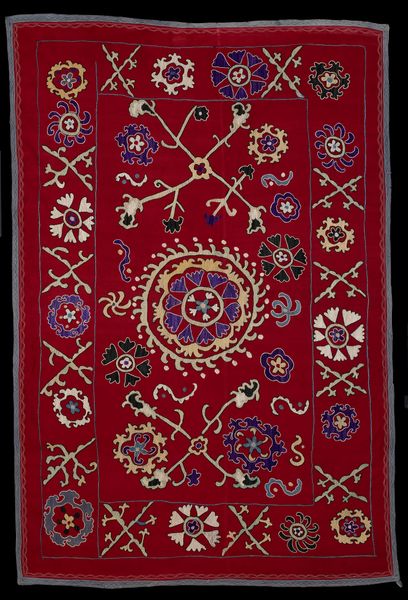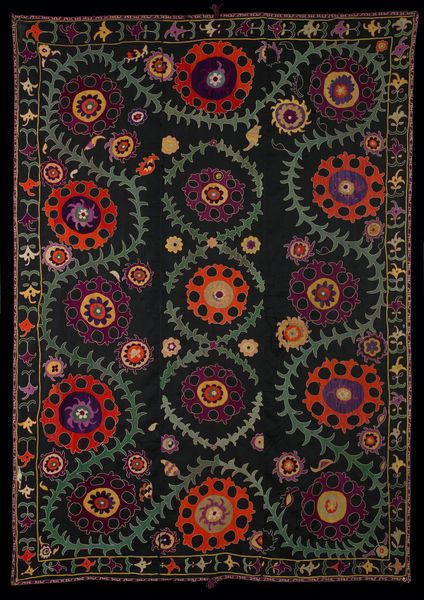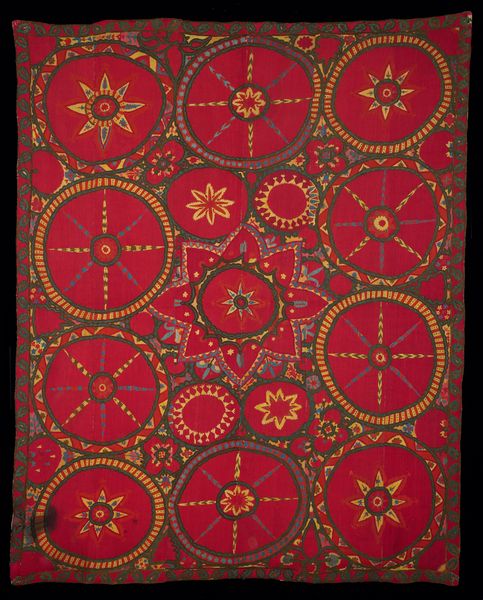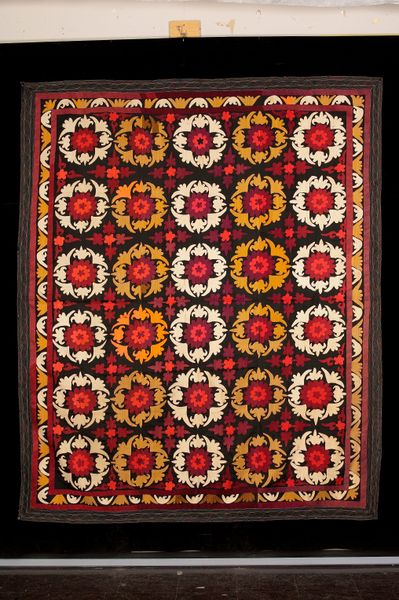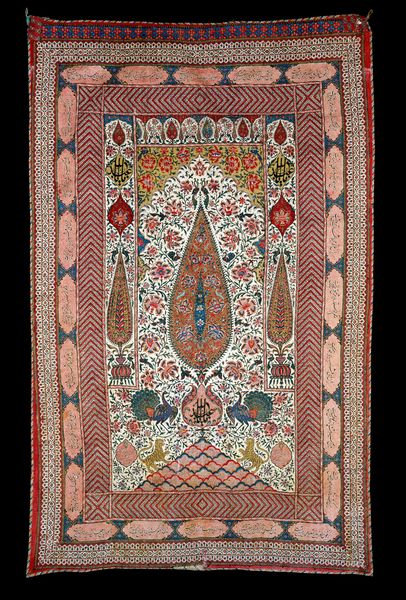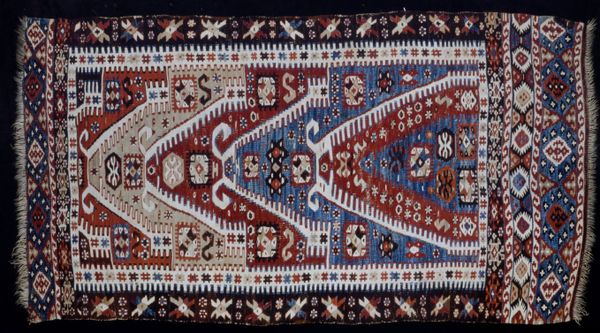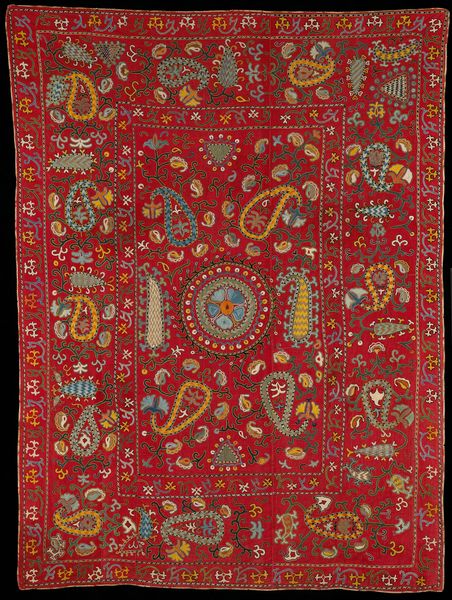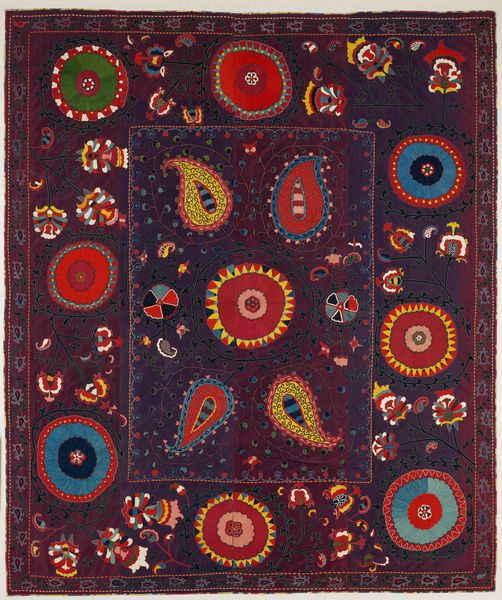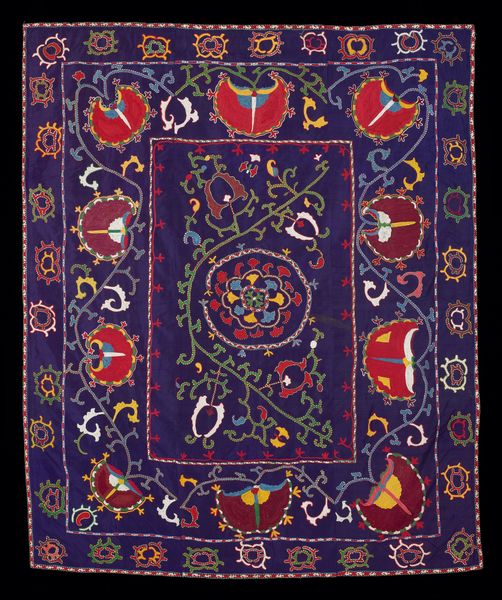
fibre-art, silk, textile, cotton
#
pattern heavy
#
fibre-art
#
silk
#
textile
#
geometric pattern
#
abstract pattern
#
organic pattern
#
geometric
#
repetition of pattern
#
vertical pattern
#
pattern repetition
#
cotton
#
islamic-art
#
decorative-art
#
layered pattern
#
funky pattern
#
combined pattern
Dimensions: 99 x 81 in. (251.46 x 205.74 cm)
Copyright: Public Domain
Curator: This textile piece, known as "Suzani," is of unknown date and held here at the Minneapolis Institute of Art. At first glance, it presents a dynamic surface due to the varied deployment of circular and floral elements. Editor: The scale is certainly compelling. But it's more than just large; it has a really assertive presence through its compositional arrangement and the sheer density of the patterned embroidery. It almost vibrates. Curator: Indeed, Suzanis like this, usually crafted from cotton and silk, were traditionally made by Central Asian brides and their families as part of their dowry. These textiles served both decorative and symbolic functions within the household, with each embroidered motif holding particular cultural significance, and they are amazing fiber-art pieces! Editor: The interplay between those swirling vegetal forms and the tighter geometric elements speaks volumes. Notice how the larger circular designs, in various shades of red and green, anchor the overall design. It's more than just decoration. The piece achieves balance through the clever counter positioning of abstract motifs. Curator: Absolutely. It's thought the circular designs represent the sun or moon, powerful symbols of life and fertility in many cultures. The floral and vegetal motifs further emphasize themes of growth, abundance, and the cycle of life, offering protection to the marriage. These objects served as a kind of visual prayer for a prosperous future. Editor: That really resonates when you look closely at the skill of the embroidery. See how each element, no matter how minute, is carefully constructed, and contributes to the larger scheme? It’s very considered. Curator: And those repeating patterns are anything but monotonous. Instead, they reinforce those foundational beliefs and wishes passed down through generations of women and their families in Uzbekistan and surrounding areas, with small, almost unnoticeable variations acting as unique maker's marks or family emblems, if you will. Editor: This experience reminds us that art extends beyond mere aesthetic display; it is also a vehicle for emotional projection and historical insight. Curator: Precisely. Hopefully our exploration provides just a brief glimpse into the rich tapestry of cultural memory and material presence woven into this unique art object.
Comments
No comments
Be the first to comment and join the conversation on the ultimate creative platform.

